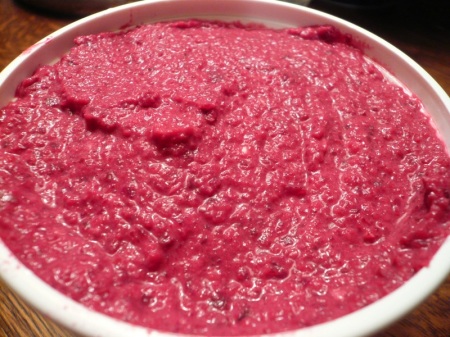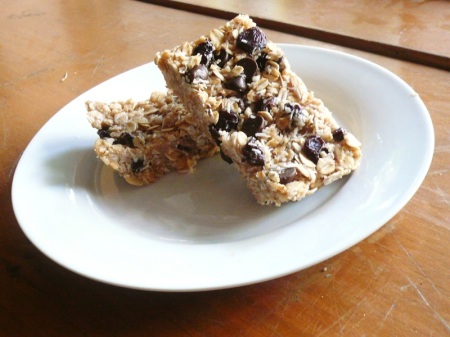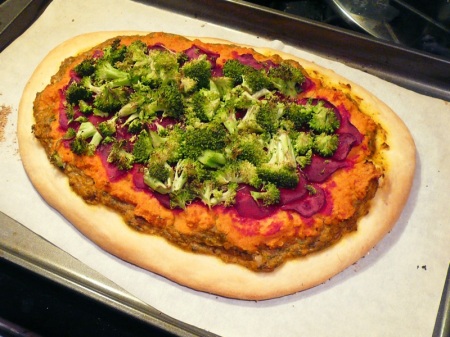
Perfecting my (Vegan) Okonomiyaki
November 13, 2011お好み焼き知っていますか。
Or, for all you English readers: Do you know about okonomiyaki?
In simplest terms, okonomiyaki is a Japanese savoury pancake. Its name means, literally, “grilled as you like it”, and because of this, the various pancakes you’ll see under the heading of okonomiyaki can be quite diverse in their specific ingredients, though the base is almost always cabbage and flour. I’ve been making my own okonomiyaki for years (and have even posted about it before here), and a few weeks ago I decided to return to my recipe and kick it up a notch. You see, I just hadn’t been as satisfied with how my okonomiyaki had been turning out—the dough wasn’t coming together as it should, the cakes weren’t frying as they needed to, and in the end it just wasn’t tasting like good ol’ okonomiyaki. So I decided to go back to the drawing board, do some internet research, and come up with a new okonomiyaki formula—and happily, my efforts resulted in success!
My new recipe is posted below, but before we get to that, here are some explanatory notes. First off, the number one secret to making awesome okonomiyaki, I discovered, is nagaimo (Dioscorea opposita), a Japanese mountain yam that looks sorta like this:
In any authentic okonomiyaki, this nagaimo gets peeled and grated, which makes it turn into a goopy, sticky mess:
I had never used nagaimo before, and I was amazed at the extra bounce and springiness it brought to my batter, making everything hold together much much better than ever before. The only problem is that nagaimo can be tricky to find, even in a big cosmopolitan city like mine (pro tip for Torontonians: I found my nagaimo at Sanko on Queen & Clairmont), so if you can’t get it where you are, don’t worry—I’d been making okonomiyaki for years without it (though you may want to add in an extra flax egg to make up for its absence).
Other than this, the recipe is fairly straightforward. Here’s what my batter looked like after everything was mixed together:
And here’s what one of my pancakes looked like after it had all been fried up:
Once again, I found that coconut oil is really key to achieving the perfect fry here, and I won’t be using any other type of oil from now on.
To finish off my okonomiyaki, I used the traditional accoutrements of (vegan) mayonnaise and Tonkatsu sauce, which for those that don’t know is a tangy Japanese “vegetable & fruit sauce” that typically looks like this:
Finally, I went a little unconventional and threw on some dulse and nori flakes and sprouts (instead of the traditional bonito shavings), ending up with one delicious dinner! The full recipe is just below.
Okonomiyaki (makes 3 perfectly reasonably sized pancakes, or 2 gargantuan ones)
Ingredients
- 2 flax eggs: 2 tbsp flaxseed meal + 9 tbsp (⅜ cup) water
- 1 cup flour
- ⅔ cup water
- ¼ cup grated nagaimo
- 4 cups thinly shredded cabbage (about half of a small cabbage)
- 2 stalks green onions, thinly sliced (about ¼ cup)
- 1 medium-sized carrot, grated (about ½ cup)
- oil for frying (ideally, coconut oil)
- vegan mayonnaise
- Tonkatsu sauce
- dulse flakes, nori flakes, & sprouts for topping
Instructions
- Start by making your flax eggs: You can just mix the flaxseed meal in warm water and let sit, but for this recipe I prefer to heat the mixture on the stove for just a couple minutes until it achieves a gooey, egg-like texture.
- Mix together the flour and water until no lumps remain.
- Add in the flax egg mixture and grated nagaimo, and mix until well combined (batter should have a nice springiness to it now).
- Add in the cabbage, onions, and carrots, and mix, again, until well combined.
- Heat up some oil in your frying pan. Scoop about one third of the batter mixture into the skillet and flatten out into a pancake shape. Let fry for five to ten minutes, until the bottom side seems to be getting crispy, then flip over and fry the other side for five minutes more. Repeat for the other two pancakes.
- For plating, top finished pancakes with a layer of vegan mayonnaise, a squiggle of Tonkatsu sauce, a handful of sprouts, and sprinkling of dulse and nori flakes. Enjoy!
Happy eating, guys! いただきます〜!
Until we eat again,
Willie













OMG, Willie, this looks awesome, truly professional!
Arigatou gozaimasu!
I just tried this out! Awesome. I used corn starch instead of flax seed which worked well, & then on top, I put grape tomatoes, asparagus spears, corn, & avocado (based on the vegetable okonomiyaki at my favorite place in Los Angeles, Gottsui). Great recipe, thank you! 😀